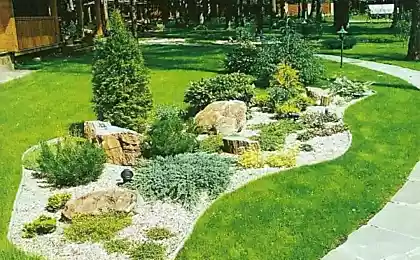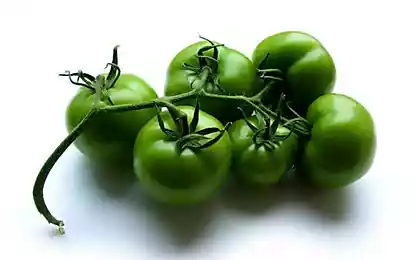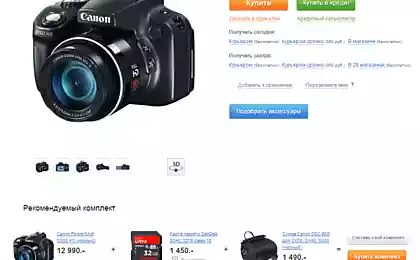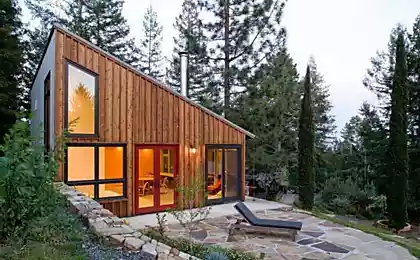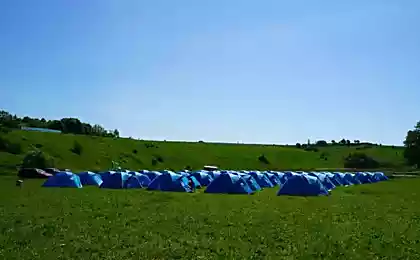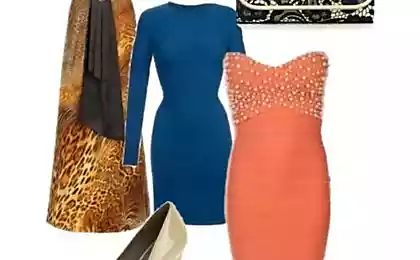506
Everyday objects from eco material
Spanish designer Martin Azua (Martín Azúa) has developed an unusual carpet on order of a local store. The carpet in the form of prints of sandals made of Esparto, the fibrous material leaves the Spanish feather-grass. Esparto is a very environmentally friendly material that grows in abundance in Spain, a fully renewable, fully biodegradable. Its tough and flexible fibers traditionally used in Spain for the production of footwear, belts, baskets, paper, artificial silk, other fabrics and thousands of other things, and as pasture forage for camels, horses and oxen.
For the production of this carpet Martin has worked with female artisans in the region of Murcia (Murcia) to support local production.


Another of the works of the designer from Esparto is a chair-tumbler, which itself becomes in a vertical position when it is not needed and takes up little space.
"Get up, Esparto" — a series of designer chairs, designed for fun and relaxation, with the peculiarity that they stand on their own, if you don't sit, you can use them wherever and however you want. Counterbalance chair is sand, which is poured inside.

This production meets the philosophy of the designer "information flow moves upward into the stratosphere, where there is no hierarchy, no limits. The production is fully local and dedicated to the environment and social development".
"The use of natural processes is a strategy of design", the author continues. "In nature nothing is free, the forms found in it, are always the result of saving material and energy, which leads to the final result. The natural processes of life correlated with the overall cycle of life."

Unfortunately, in today's world such useful material as Esparto replaced by plastic or glass, whose heavy manufacturing is not environmentally friendly to the environment. But in Murcia, as in other cities of Spain in families still keep the tradition of the production of this herb and use in everyday life?

There is even the Esparto Museum (Museo del Esparto), which was created jointly with the centre for the elderly (el Centro de Día de Personas Mayores del ISSORM en Cieza).
It was founded in order to preserve the traditions and culture of the Spanish people. The organizers interviewed residents of the center, carefully studied their stories to accurately convey the details of the lifestyle and to recreate the forgotten skill.

Source: /users/104
For the production of this carpet Martin has worked with female artisans in the region of Murcia (Murcia) to support local production.


Another of the works of the designer from Esparto is a chair-tumbler, which itself becomes in a vertical position when it is not needed and takes up little space.
"Get up, Esparto" — a series of designer chairs, designed for fun and relaxation, with the peculiarity that they stand on their own, if you don't sit, you can use them wherever and however you want. Counterbalance chair is sand, which is poured inside.

This production meets the philosophy of the designer "information flow moves upward into the stratosphere, where there is no hierarchy, no limits. The production is fully local and dedicated to the environment and social development".
"The use of natural processes is a strategy of design", the author continues. "In nature nothing is free, the forms found in it, are always the result of saving material and energy, which leads to the final result. The natural processes of life correlated with the overall cycle of life."

Unfortunately, in today's world such useful material as Esparto replaced by plastic or glass, whose heavy manufacturing is not environmentally friendly to the environment. But in Murcia, as in other cities of Spain in families still keep the tradition of the production of this herb and use in everyday life?

There is even the Esparto Museum (Museo del Esparto), which was created jointly with the centre for the elderly (el Centro de Día de Personas Mayores del ISSORM en Cieza).
It was founded in order to preserve the traditions and culture of the Spanish people. The organizers interviewed residents of the center, carefully studied their stories to accurately convey the details of the lifestyle and to recreate the forgotten skill.

Source: /users/104

